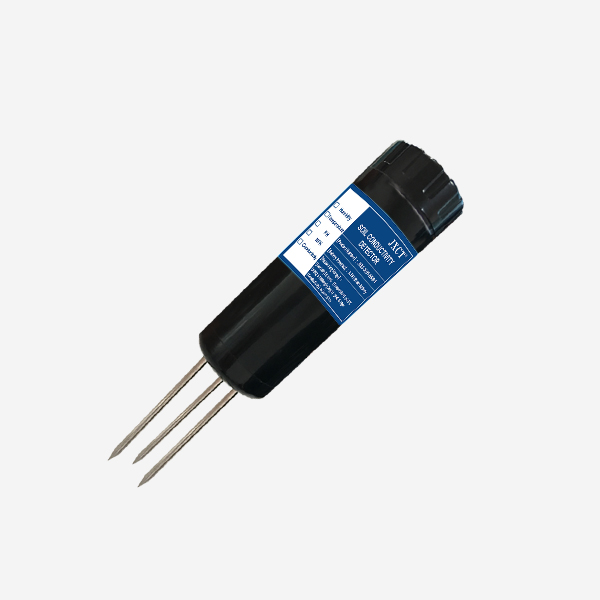Agriculture is a vital industry that feeds the world’s growing population. However, it faces numerous challenges, including the need to produce more food sustainably, optimize resource utilization, and mitigate environmental impact. In recent years, soil sensor technology has emerged as a game-changer in revolutionizing agriculture. This article explores the significance of soil sensors in advancing sustainable farming practices and their potential to transform the agricultural landscape.

The Importance of Sustainable Farming:
Sustainable farming is the practice of producing food in a way that preserves natural resources, minimizes environmental impact, and ensures long-term agricultural productivity. It involves optimizing inputs such as water, fertilizers, and pesticides, while promoting soil health, biodiversity, and ecosystem resilience. Sustainable farming is crucial for meeting the nutritional demands of a growing global population while preserving the planet for future generations.
Understanding Soil Health:
Soil health is a fundamental aspect of sustainable farming. Healthy soils support optimal plant growth, nutrient availability, water-holding capacity, and carbon sequestration. Soil analysis is traditionally conducted through manual sampling and laboratory testing, which provide limited insights due to the spatial and temporal variability of soil conditions. Soil sensors offer a breakthrough solution by providing real-time, continuous data on key soil parameters.
Soil Sensor Technology:
Soil sensors are devices designed to measure various soil properties, including moisture content, temperature, pH levels, nutrient levels, and compaction. These sensors utilize advanced technologies such as electromagnetic, electrical resistance, or optical sensors to collect data accurately and efficiently. The collected data can be transmitted wirelessly to a central system, enabling farmers to monitor soil conditions remotely and make informed decisions.
Real-Time Data Collection and Analysis:
One of the significant advantages of soil sensors is their ability to collect real-time data. Unlike traditional soil sampling, which provides a static snapshot of soil conditions, soil sensors offer continuous monitoring. This real-time data collection allows farmers to capture variations and trends in soil health parameters, enabling them to implement timely interventions and optimize farming practices.
Precision Agriculture and Resource Optimization:
Soil sensors play a pivotal role in precision agriculture, a farming approach that utilizes technology to tailor inputs precisely to the specific needs of each crop or field. By continuously monitoring soil conditions, sensors provide valuable insights into irrigation requirements, fertilizer application rates, and pest control measures. This targeted approach optimizes resource utilization, reduces input waste, and minimizes environmental pollution.
Early Detection of Soil Issues:
Timely detection of soil issues is crucial for preventing yield loss and soil degradation. Soil sensors can detect early signs of nutrient deficiencies, pH imbalances, salinity, or compaction issues. With this information, farmers can take proactive measures such as adjusting fertilizer applications, improving drainage, or implementing soil conservation practices. By addressing soil issues early on, farmers can maintain soil health and prevent long-term damage.
Data-Driven Decision Making and Sustainable Practices:
The availability of accurate and reliable data from soil sensors enables data-driven decision making in agriculture. Farmers can analyze historical trends, compare different areas within a field, and identify patterns that help optimize soil management strategies. By integrating soil sensor data with other sources, such as weather data or crop growth models, farmers can make informed decisions to enhance productivity while minimizing environmental impact.
Challenges and Future Outlook:
While soil sensors offer tremendous potential, there are challenges to overcome for widespread adoption. Cost, sensor accuracy, calibration, and data interpretation are some of the challenges that need to be addressed. However, with advancements in sensor technology and increased research efforts, these limitations are being minimized.
The future of soil sensor technology lies in the integration of sensor data with emerging technologies like Artificial Intelligence (AI) and Machine Learning (ML). AI-powered algorithms can analyze large datasets and provide actionable insights, enabling farmers to optimize soil management practices further.

Conclusion:
Soil sensor technology is revolutionizing agriculture and paving the way for sustainable farming practices. Real-time data collection, precision agriculture, early issue detection, and data-driven decision making are transforming the way farmers manage their soils. By harnessing the power of soil sensors, farmers can improve crop productivity, conserve resources, reduce environmental impact, and ensure the long-term sustainability of agricultural practices. The continued development and adoption of soil sensor technology will play a significant role in shaping the future of sustainable farming.
